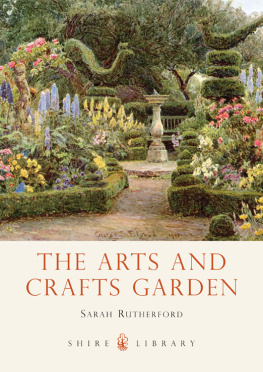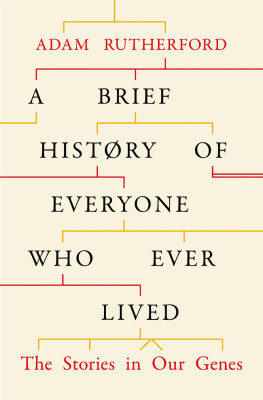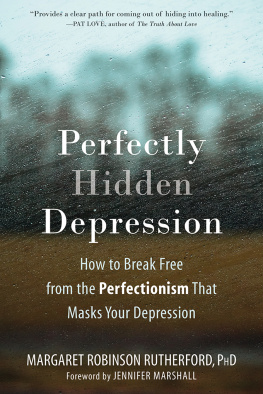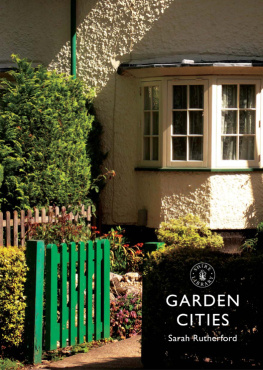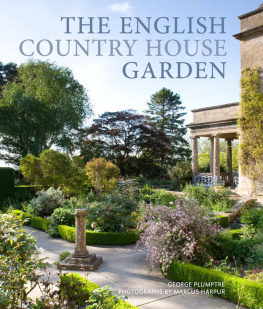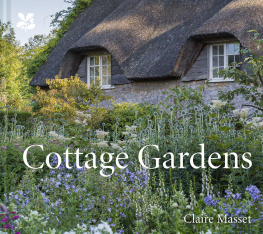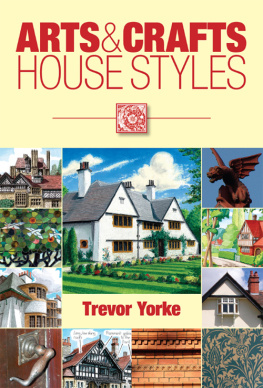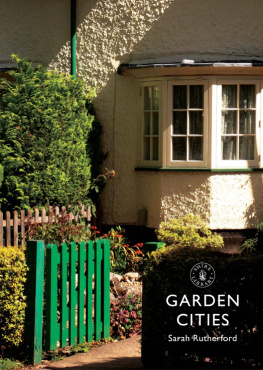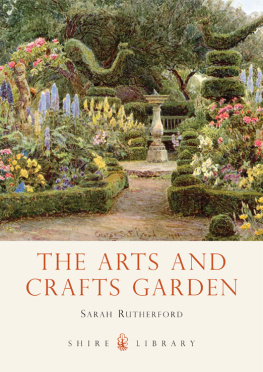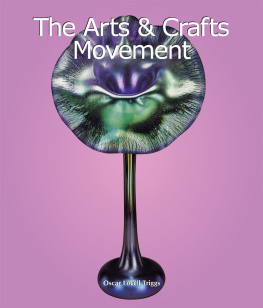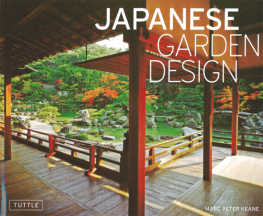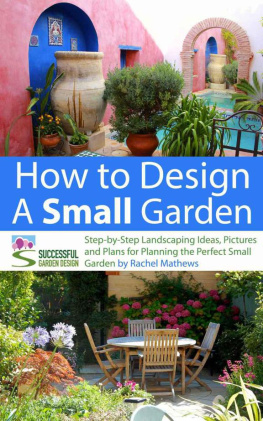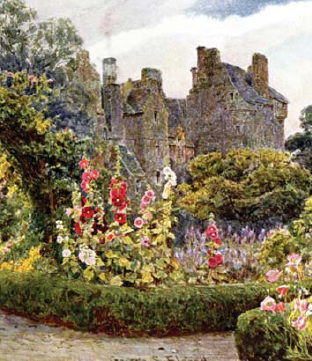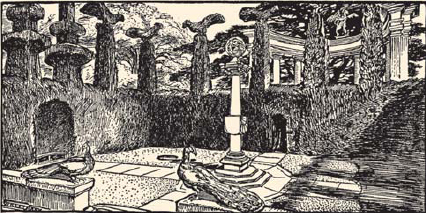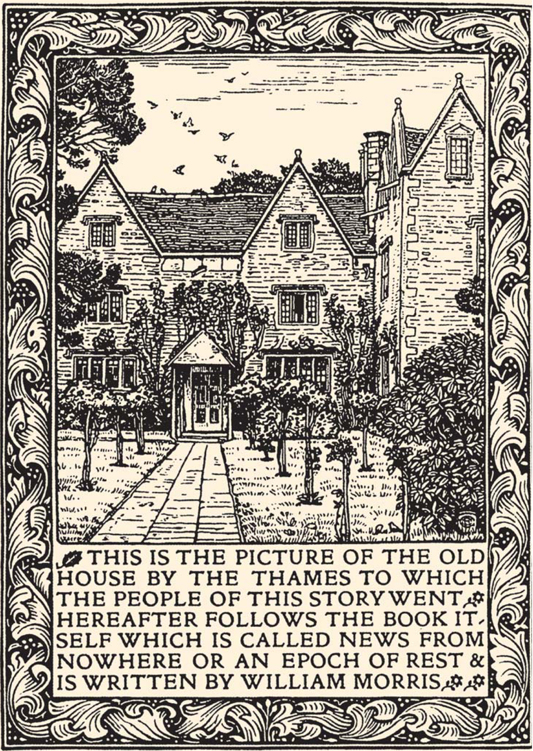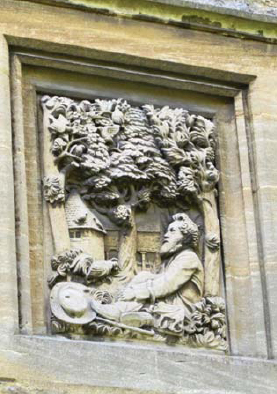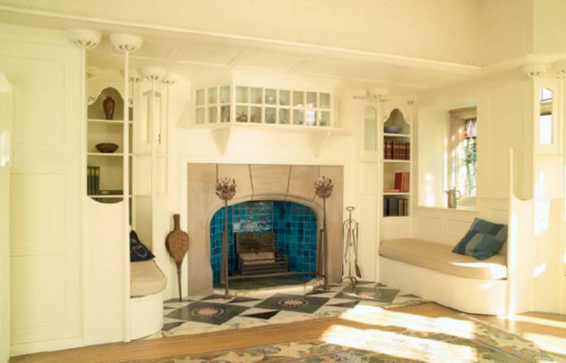THE ARTS AND CRAFTS GARDEN
Sarah Rutherford
Cottage garden plants were embraced in the Arts and Crafts garden: hollyhocks and Shirley poppies in box-edged borders at Kellie Castle, Fife (Lorimers first garden), with roses for which the garden was famed. Miss Jekyll approved and was impressed by the hollyhocks in big free groups.
SHIRE PUBLICATIONS
Intimate garden rooms epitomised Arts and Crafts gardens. This design is from one of the earliest manuals on Arts and Crafts garden design, J. D. Seddings Garden-Craft Old and New (1891).
CONTENTS
The Arts and Crafts ideal: Kelmscott Manor as portrayed for Morriss idealistic socialist novel News from Nowhere, published by his Kelmscott Press (1893).
INTRODUCTION: THE ARTS AND CRAFTS MOVEMENT
T HE ARTS AND CRAFTS MOVEMENT is best known as an international design movement, but it also embodied a moral code and whole way of life for its greatest enthusiasts. It flourished in the late nineteenth century, with its greatest popularity in the first years of the twentieth century. A reverence for nature and for the traditions of building and craftsmanship were fundamental to its values. Its influence has continued and is still felt today. The foundations of its craft and design philosophy, which embodied a strong social and moral core, were laid by the Pre-Raphaelite artistic movement from the 1850s, and strengthened by the Artworkers Guild from its foundation in 1884. A number of personalities are inextricably bound up in its genesis, development and enthusiastic acceptance as a way of life.
Initially the Arts and Crafts Movement was led by the writer, designer and socialist William Morris (183496) and the architect Charles Voysey (18571941). The movement was inspired by the writings of John Ruskin and the designs and ideas of the architect and designer A. W. N. Pugin, who saw a strong relationship between architecture, design and the crafts, and emphasised nature as a source of inspiration. These ideals were largely a reaction against the impoverished state of the decorative arts at the time: shoddy, mass-produced objects were created by machine operators in appalling conditions. Instead the movement embraced the return to the ideals of simplicity, utility, craftsmanship, natural materials and vernacular forms for which Morris so passionately argued, produced with dignity of labour.
William Morris was an influential friend of the Pre-Raphaelites. This group of avant-garde painters associated with John Ruskin arose in the 1850s as a loose association of like-minded artists; leading lights included William Holman Hunt, John Everett Millais, Dante Gabriel Rossetti and Edward Burne-Jones. In their approach they were greatly influenced by nature, detailing the natural world in their work with bright, sharply focused techniques. Alongside this Morris made his name as an artist and manufacturer of high-quality, well-designed furnishings and as a socialist writer. He was also a pioneer of conservation practices and principles that underpin todays conservation movement, and he founded the Society for the Protection of Ancient Buildings in 1877. As a key part of the Arts and Crafts Movement he helped to found the Artworkers Guild, whose members expressed the principles of the movement in their high-quality craftsmanship and design, and in his writing set out the origins of ideas that were so influential in the development of gardens.
The Arts and Crafts Movement turned its back on the artificiality and intensive manufacture represented by the High Victorian industrial world and instead applied medieval, romantic or folk styles of decoration. Followers espoused an idealised way of living which influenced all aspects of the home: the house, its furnishings and decoration, textiles, fine arts and jewellery, books, and of course its setting: the garden. Throughout this, the representation of nature continued to be a seminal motif.
William Morris (183496), co-founder of the Arts and Crafts Movement in the 1860s. Relief by George Jack (1902) on the Memorial Cottages, Kelmscott, designed by Philip Webb.
In 1899 the Scots architect Robert Lorimer summed up the ethos of the Arts and Crafts garden in the Architectural Review, when he described his ideal:
A garden that is in tune with the house, a garden that has a quite different sort of charm from the park outside, a garden that is an intentional and deliberate piece of careful design, a place that is garnished and nurtured with the tenderest care, but which becomes less trim as it gets further from the house, and then naturally and gradually marries with the demesne that lies beyond ... you can stroll right out into the garden inclosed but what a paradise can such a place be made! Such surprises little gardens within the garden, the months garden, the herb garden, the yew alley. The kitchen garden too, and this nothing to be ashamed of, to be smothered away far from the house, but made delightful by its laying out. Great intersecting walks of shaven grass, on either side borders of the brightest flowers backed up by low espaliers hanging with shining apples.
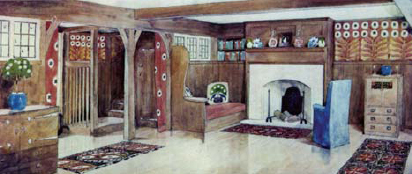
A rich Arts and Crafts interior embodied the warmth and fellowship of the Arts and Crafts Movement. Falkewood, by the major architect of the movement, M. H. Baillie Scott (1906).
The most highly regarded Arts and Crafts homes were planned as an entirety. The garden was an extension of the house, an integral part of the whole home intended to embody the Arts and Crafts principles. Those Arts and Crafts homes regarded as the most successful united the house, its decor and contents, and setting.
Philip Webb (18311915) was Morriss friend and a pioneer Arts and Crafts architect who became revered for his approach, as well as a fellow conservationist. In 1859, when they were both young, idealistic men, Webb designed Morriss first house, Red House, from scratch in an orchard in rural Bexleyheath, then just beyond south-east London near the medieval Pilgrims Route to Canterbury. Morriss Red House has been described as the architectural Arts and Crafts springboard, as it heralded Arts and Crafts principles. However, the garden was more Pre-Raphaelite than Arts and Crafts, emphasising the value of detail without the strong unity of design that defines the latter (and later) movement. Even so, it was certainly a forerunner of the Arts and Crafts garden.
Interiors were also light and airy. The White Drawing Room, Blackwell, Cumbria, designed by M. H. Baillie Scott (18981900).

